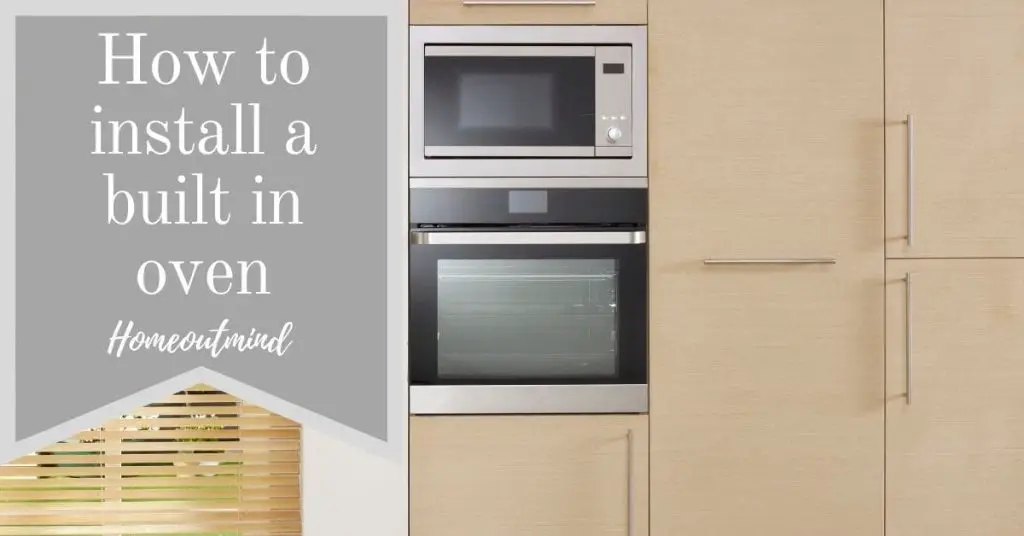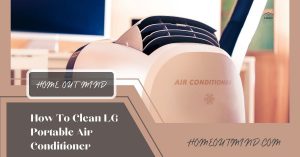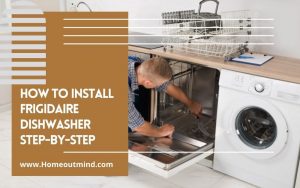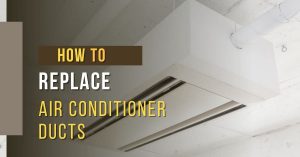Are you planning to set up an oven and you don’t know how to install a built in oven?
Ovens are used as kitchen home equipment for roasting and heating. Foods normally cooked on this method embody meat, casseroles, and baked items comparable to bread, cake, and different desserts.
In modern times, the oven is used to cook dinner and warm meals in lots of households throughout the globe.
Ovens usually can use a wide range of methods to cook.
The most typical could also be to heat the oven from beneath. This is usually used for baking and roasting.
The oven might also have the ability to heat from the highest to supply broiling or frilling.
A fan-assisted oven that makes use of a small fan to flow into the air within the cooking chamber, can be utilized.
Both are also referred to as convection ovens. An oven might also present a built-in rotisserie.
In this article, we’ll show you how to install a built in oven step-by-step.

What are the materials needed to install a built in oven?
- Phillips Screwdriver
- Drill
- 6 Screws For Bottom Trim (Three wanted for setting up and three extras)
- 6 Wood Screws For Mounting (Four wanted for setting up and a couple of extras)
- Wire Nuts
- 3/4” Conduit Connector
- Junction Box
- 36” (91 cm) of String
How to install a built in oven Step-By-Step
STEP1. DOUBLE BUILT-IN OVEN
measure your present cutout dimensions and evaluate them to the cutout dimensions
1. Product dimensions
- Width : 29 3/4” (75.5 cm)
- Height : 52 1/16” (132.2 cm)
- Depth : 27 3/8” (69.5 cm)
2. cutout dimensions
- Cabinet Width 30” (762 mm)
3. Cutout location
- from ground 12” (304.8 mm)
- Cutout Depth 23 1\/2” Min. (596.9 mm)
- Cutout Width 28 1\/2” Min. (723.9 mm) 28 5/8” Max. (727 mm)
- Cutout Height 51 13/16” Min. (1316 mm) 51 15/16” Max. (1319.2 mm)
STEP2. SINGLE BUILT-IN OVEN UNDER COUNTER
1. Product dimensions
- Dimensions are similar to the double built-in oven
2. cutout dimensions
- Cutout Width 28 1\/2” (72.4 cm) Min. 28 5/8” (72.7 cm) Max.
- Cutout top 28 15/16” (73.5 cm) Min. 29” (73.7 cm) Max
- From ground 24” (61 cm)
- Countertop width 25” (63.5 cm
- 36” (91.4cm) Typical Countertop Height
- 4” (10.2 cm) Typical Toekick
- Allow 1” (2.5 cm) overlap top of the oven, 1 1/16” (1.8 cm) overlap aspect edges of the cutout, and 1 1/4” (3.2 cm) overlap the bottom of the oven
- 23 1\/2” (59.7cm) Min. Above Support Platform
Notes:
• The cabinet base platform should have the ability to assist 190lbs (86Kg). If the cabinet doesn’t have a solid bottom, two braces or runners should be put in degree with the bottom of the cutout to support the weight of the oven. Make certain the bottom is degree and the front of the cabinet is square.
If the cabinet base shouldn’t be degree, the oven glides will tend to slide out when opening the door.
• If marks, blemishes, or the cutout opening are seen above the put-in oven, it might be obligatory to add wooden shims below the runners and front trim till the marks or opening are covered.
• If the cabinet doesn’t have a front frame and the edges are lower than 3/4” (1.9 cm) thick, shim either side equally to ascertain the cutout width.
• The junction box should be flush with the rear wall of the cabinet.
• Allow no less than 23” clearance for door depth when it’s open.
Step3. PREPARATION FOR MOVING THE OVEN
The third step of your setup ought to be to remove any packing materials from the oven before installing the oven
1. Remove all tape from across the oven.
2. Open the oven door and take away packaging supplies and oven racks contained in the oven.
3. Door removing just isn’t a requirement for the set up of the oven however is an added convenience. To take away the door, comply with the steps below:
Step1) Fully open the door.
Step2) Pull the hinge locks down towards the door frame, to the unlocked position.
Step3) Firmly grasp each side of the door on the top.
Step4) Close the door to the door removing position, which is approximately 5 levels.
Step5) Lift the door and out till the hinge, the arm is obvious of the slot.
4. Place the oven on a table or platform even with the cutout opening. (table or platform should help 190lbs [86Kg] for a single built-in oven, 325lbs [147Kg] for a double built-in oven
5. Remove the steel backside trim from the oven. It will likely be put in on the finish of the setup course. The trim is wrapped individually and taped to the highest of the unit.
STEP4. ELECTRICAL CONNECTION REQUIREMENTS
The fourth step of your setup needs to be to comply with {the electrical} connection necessities beneath. Dedicated circuit safety should be ready as advisable in electrical connection requirements and the oven needs to be grounded correctly.
This wall oven should be equipped with the right voltage and frequency and related to a person, correctly grounded branch circuit, protected by a circuit breaker or fuse. To know the circuit breaker or fuse required by this model
see the rating plate to seek out the wattage consumption and confer with the desk beneath to get the circuit breaker or fuse amperage.
| Appliance Rating Watts 240V | Protection Circuit recommended | Appliance Rating Watts 208V | Protection Circuit recommended |
| Less than 4800W | 20A | less than 4100W | 20A |
| 4800W – 7200W | 30A | 4100W – 6200W | 30A |
| 7200W – 9600W | 40A | 6200W – 8300W | 40A |
| 7200W – 9600W | 50A | 8300 and + | 50A |
• A double wall oven can eat as much as 7,800W at 240VAC. A 40Amp circuit breaker with wire gauge #8 AWG should be used.
• A single wall oven can eat as much as 4,100W at 240VAC. A 30Amp circuit breaker with a wire gauge of not less than #10 AWG should be used.
STEP5. ELECTRICAL CONNECTION
The fourth step of your setup needs to be to arrange {the electrical} connection as follows:
1. Turn off the circuit breaker or take away fuses to the oven branch circuit.
2. With the oven positioned straight in front of the cabinet opening, connect the flexible conduit to {the electrical} junction box
Position the conduit in such a manner that it’s going to lie on top of the oven in a pure loop when the oven is put in.
3. If local codes allow the connection of the frame grounding conductor to the impartial(white) wire, comply with the instruction of the 3-wire circuit connection beneath.
If utilized in cell houses or new construction, or leisure vehicles or local codes don’t allow connection of the frame grounding conductor to the neutral(white) wire, comply with the instruction of 4-wire circuit connection under.
3-wire circuit connection
1. Connect the oven floor (green) wire and impartial (white) wire to the branch circuit impartial (white or gray) wire, utilizing a wire nut.
2. Connect the oven red wire to the branch circuit red (L2) wire following local codes, utilizing a wire nut.
3. Connect the oven black wire to the branch circuit black (L1) wire under local codes, utilizing a wire nut. If the residence red, black or white wires are aluminum conductors,
4. Install the junction box cover.
4-wire circuit connection
1. Separate the oven floor and white wires if needed.
2. Connect the oven floor (inexperienced) wire to the branch circuit floor (inexperienced) wire following local codes, utilizing a wire nut. If the residence red, black or white wires are aluminum conductors.
3. Connect the oven white wire to the branch circuit impartial (white or gray) wire following native codes, utilizing a wire nut.
4. Connect the oven red wire to the branch circuit red (L2) wire following local codes, utilizing a wire nut.
5. Connect the oven black wire to the branch circuit black (L1) wire following local codes, utilizing a wire nut. If the residence red, black or white wires are aluminum conductors.
6. Install the junction box cover.
STEP6. CABINET INSTALLATION
The sixth step of your setup must be to put in the oven into the cabinet as follows:
1. Sliding the oven into the opening.
a. Loop (don’t tie) a 36” (91cm) string across the conduit earlier than the oven is slid into place. This will maintain the conduit from falling behind the oven.
b. Lift oven into cabinet cutout utilizing the oven opening as a grip. Carefully push in opposition to the oven front frame. Do not push in opposition to exterior edges.
c. As you slide the oven back, pull the string so that the conduit will lie on the highest of the oven in a pure loop.
d. When you’re certain the conduit is out of the best way, slide the oven 3/4 means back into the opening. Remove the string by pulling on one end of the loop.
2. Securing the oven.
a. Using the mounting holes on the oven aspect trim as information, drill pilot holes for screws offered (For securing the double wall oven, use a minimum of 4 screws, one on either side in each of the higher and lower ovens. For securing the one wall oven, use a minimum of 2 screws, one on either side.)
b. Secure the oven to the cabinet with screws offered. If the cabinet is particleboard, it’s essential to use 3/4” particleboard screws. These could also be purchased at any ironmongery store.
3. Installing the metallic backside trim.
a. Place the metallic backside trim centered over the pre-drilled mounting holes on the decrease base.
b. Using Three screws offered, safe the underside trim to the underside fringe of the cabinet.
4. Reinstalling the oven door:
Step1)
Firmly grasp each side of the door on the top.
Step2)
With the door at a similar angle because of the elimination place, seat the indentation of the hinge arm into the bottom fringe of the hinge slot. The notch within the hinge arm has to be seated on the backside of the slot.
Step3)
Fully open the door. If the door is not going to open, the indentation isn’t seated accurately within the backside fringe of the slot.
Step4)
Push the hinge locks up in opposition to the front frame of the oven cavity to the locked place.
Step5)
Close the oven door.
STEP7. CHECKING OPERATION
1. Turn on the facility supply. The preliminary sign sound will likely be heard.
2. Check the operation of the broil mode. When the oven is about to broil, the higher element within the oven ought to grow to be red. After a couple of minutes, partially open the oven door. You ought to feel the heat from the oven. Press the “CLEAR/OFF” pad.
3. Check the operation of the bake mode. After setting the oven to 350˚F/177˚C for baking, the temperature of the oven within the show ought to improve. Press the “CLEAR/OFF” pad.
4. Check the operation of the convection bake mode. After setting the oven to 350˚F/177˚C for convection baking, the fan contained in the oven ought to come on with the door closed. Press the “CLEAR/OFF” pad.
5. Turn on and off the oven light to test the lights are in a regular situation.
6. Check the operation of the furnace convection mode. After setting the oven to 350˚F/177˚C for the furnace convection mode, the again element ought to mild up and the fan contained in the oven ought to come on with the door closed.



